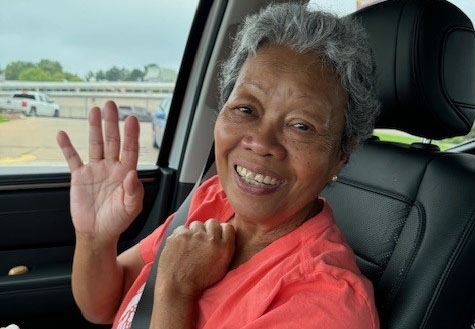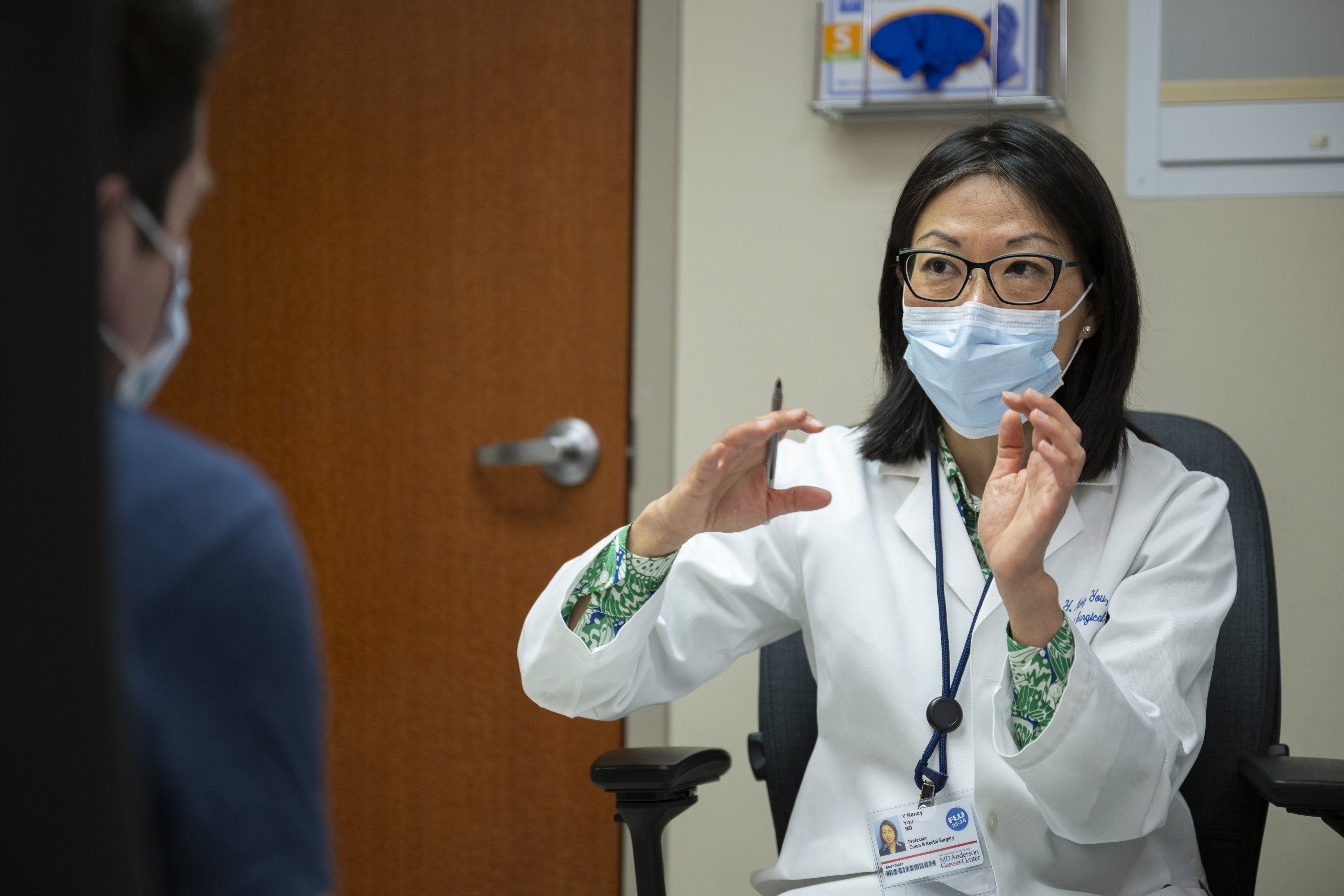- Diseases
- Acoustic Neuroma (14)
- Adrenal Gland Tumor (24)
- Anal Cancer (68)
- Anemia (2)
- Appendix Cancer (16)
- Bile Duct Cancer (26)
- Bladder Cancer (72)
- Brain Metastases (28)
- Brain Tumor (232)
- Breast Cancer (714)
- Breast Implant-Associated Anaplastic Large Cell Lymphoma (2)
- Cancer of Unknown Primary (4)
- Carcinoid Tumor (8)
- Cervical Cancer (158)
- Colon Cancer (166)
- Colorectal Cancer (118)
- Endocrine Tumor (4)
- Esophageal Cancer (44)
- Eye Cancer (36)
- Fallopian Tube Cancer (8)
- Germ Cell Tumor (4)
- Gestational Trophoblastic Disease (2)
- Head and Neck Cancer (12)
- Kidney Cancer (128)
- Leukemia (342)
- Liver Cancer (50)
- Lung Cancer (286)
- Lymphoma (278)
- Mesothelioma (14)
- Metastasis (30)
- Multiple Myeloma (100)
- Myelodysplastic Syndrome (60)
- Myeloproliferative Neoplasm (6)
- Neuroendocrine Tumors (16)
- Oral Cancer (100)
- Ovarian Cancer (172)
- Pancreatic Cancer (160)
- Parathyroid Disease (2)
- Penile Cancer (14)
- Pituitary Tumor (6)
- Prostate Cancer (146)
- Rectal Cancer (58)
- Renal Medullary Carcinoma (6)
- Salivary Gland Cancer (14)
- Sarcoma (238)
- Skin Cancer (296)
- Skull Base Tumors (56)
- Spinal Tumor (12)
- Stomach Cancer (64)
- Testicular Cancer (28)
- Throat Cancer (92)
- Thymoma (6)
- Thyroid Cancer (98)
- Tonsil Cancer (30)
- Uterine Cancer (80)
- Vaginal Cancer (16)
- Vulvar Cancer (20)
- Cancer Topic
- Adolescent and Young Adult Cancer Issues (20)
- Advance Care Planning (10)
- Biostatistics (2)
- Blood Donation (18)
- Bone Health (8)
- COVID-19 (362)
- Cancer Recurrence (120)
- Childhood Cancer Issues (120)
- Clinical Trials (632)
- Complementary Integrative Medicine (22)
- Cytogenetics (2)
- DNA Methylation (4)
- Diagnosis (232)
- Epigenetics (6)
- Fertility (62)
- Follow-up Guidelines (2)
- Health Disparities (14)
- Hereditary Cancer Syndromes (126)
- Immunology (18)
- Li-Fraumeni Syndrome (8)
- Mental Health (116)
- Molecular Diagnostics (8)
- Pain Management (62)
- Palliative Care (8)
- Pathology (10)
- Physical Therapy (18)
- Pregnancy (18)
- Prevention (918)
- Research (392)
- Second Opinion (74)
- Sexuality (16)
- Side Effects (604)
- Sleep Disorders (10)
- Stem Cell Transplantation Cellular Therapy (216)
- Support (402)
- Survivorship (322)
- Symptoms (182)
- Treatment (1786)
My brain tumor story
3 minute read | Published February 06, 2017
Medically Reviewed | Last reviewed by an MD Anderson Cancer Center medical professional on February 06, 2017
My brain tumor diagnosis came suddenly. I had no pain, headaches or any kind of warning. On Oct. 3, 2016, I had difficulty conveying my thoughts during a casual conversation at lunch. By 5 p.m., I just didn’t feel right and had difficulty communicating and texting. Our son, a physician, suggested I go to the ER for a CT scan.
My husband and I did just that, and the world changed at 6 p.m. when the radiologist confirmed I had a large brain tumor. We headed to MD Anderson two days later.
My brain tumor surgery
At the MD Anderson Brain and Spine Center, we met with the most amazing and empathetic neurosurgeon, Sherise Ferguson, M.D. I immediately felt at ease knowing I was getting the best care available. She scheduled a craniotomy for the following Friday.
I had no symptoms, so I went shopping on Saturday and to dinner that night. But on Sunday morning, I awoke confused and weak. We immediately went to the MD Anderson Emergency Center.
After an MRI on Sunday, my surgery was moved up to the next day: Oct. 10. Dr. Ferguson operated on me for 12 hours and removed more than 95% of the brain tumor, which turned out to be glioblastoma.
When I awoke, she told me that she had done her job and that my job was to listen to the therapists, do my therapy and rest. She said my husband was in charge of everything else. I am so lucky to have had his love and support through all of this.
Regaining mobility after my craniotomy
I didn’t feel any pain when I awoke after surgery, but I couldn’t move my right leg or arm. I could only wiggle my right thumb a little bit. Three days later, I was released from the ICU into recovery, then rehab.
The results from that point on were nothing short of miraculous. My days started with speech and cognitive therapy with Jaimie. Then I would do an hour of physical therapy with Liz, Reggie and Hillary, have lunch, and Taylor would start another hour of occupational therapy.
Within a few days, I could move my arm, then leg a little bit. Two weeks after surgery, I was getting my hair done, walking with a walker and writing to-do lists for my husband! Many people wanted to visit me, but my days were so full of therapy and exercise that I refused all requests. Instead, I completely focused on Dr. Ferguson’s orders to listen to my therapists and rest. By Oct. 27, I began walking without the aid of a walker and was soon walking all over the hospital. I even participated in a hospital-wide scavenger hunt!
The therapists taught me not just to exercise, but the fundamentals of safety as well. They even brought the car to the front door so I could practice getting in and out. I was discharged on Nov. 2 and released from speech therapy, but I continued my occupational and physical therapy as an outpatient. Thank you, Raymond, Lejoe and Shammi!
My amazing doctors, nurses and therapists took excellent care of me and pushed me to get better each day. Their positive attitudes were contagious. Everyone from the receptionists to the car valets were considerate and truly caring.
Soon after discharge, I met with radiation oncologist Jing Li, Ph.D., and neuro-oncologist Carlos Kamiya Matsuoka, M.D. Together they planned a six-week regime of radiation and chemotherapy, which I completed just before Christmas.
Life after brain tumor treatment
Today, I am home and fully mobile. Thanks to my therapists, I can even carry my 18-pound, 5-month-old grandson around the house. I continue to do my exercises and feel even better every day. My faith, family and friends are my rock.
While I know everyone’s experience is different, I feel blessed to have never felt bad from surgery, radiation or chemotherapy. I know I have a second chance after my craniotomy, and I look forward to spending time with family and friends every day.
Request an appointment at MD Anderson online or by calling 1-844-600-1514.
Related Cancerwise Stories

I know I have a second chance after my craniotomy.
Cammie Shaddock
Survivor





